"Item is a film taken by Dr. Willinsky of a trip to Italy. In the form of a travelogue, footage of landmarks, ruins and the local population is interspersed with captions that were added in by Dr. Willinsky to provide information about the country's history and culture. Although the title highlights the film's documentation of Rome and Naples, other Italian cities are featured as well; including, Pompeii, Florence and Venice. Dr. Willinsky's wife, Sadie, is occassionally spotted in the footage with travel companions who are probably relatives or family friends." Ontario Jewish Archives.
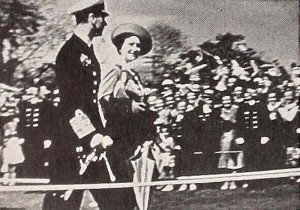
"What we have all wished a newsreel presentation of an important event could be has at last been brought to actuality by T. J. Courtney in his fine Kodachrome film Royal Visit — Halifax 1939. Let us hasten to add, also, that this film, besides being the apotheosis of the newsreel presents a carefully connected story of the events of the long anticipated day of the Royal visit in his city. Chiefly outstanding is the skillful and always appropriate use of closeups and atmosphere shots made with great care before, during and after the event and cut in with real skill to heighten the effect. But, most of all, the film is remarkable for its pace and sincere interpretation of public feeling; the early preparations for the Royal visit; the breathless expectation; the high enthusiasm at the time of Their Majesties' appearance, the promise of long remembrance at their departure — all these are clearly shown by Mr. Courtney's cinematic commentary. The complications that must have confronted him on this exciting day must be considered in our approval, too. He succeeded admirably in picturing the general excitement and enthusiasm, but at no time did his camera desert its steady support and accurate framing of the principal subject. The natural, close shots of the King and Queen are unsurpassed." Movie Makers, Dec. 1939, 632.
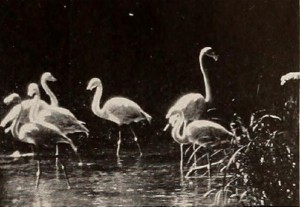
"By a clever editorial feat, Charles H. Benjamin has transformed a series of animal scenes which he filmed at New York City's Bronx Zoo into a pseudo travelog of the African game belt. He achieved this effect by simply cutting shots of heavily wooded streams into footage of the uncaged animals in the famous zoo, and the illusion is pointed up by some striking title frames. Mr. Benjamin's camera work matches his editorial insight, for his exposures and composition are first rate. His use of back lighting gives his shots of flamingoes and drowsing lions a brilliance that puts them far above the usual run of animal pictures." Movie Makers, Dec. 1946, 488.
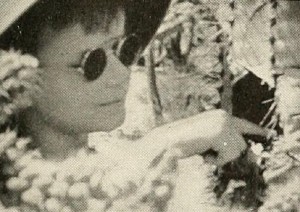
"Sahuaro Land, by Frank E. Gunnell, is as clever and painless a teaching film as one may find in many a classroom screening. Here, in a colorful Arizona cactus desert, we find the surefire ingredients of a boy and his dog. The boy is an enthusiastic nature student who, in the course of his explorations of the region, contrives to make sundry entries in his notebook, which find their way to the screen. These data are all so natural a part of the story, however, that the information conveyed does not assume the rather forbidding status of an instructional title in any case. The outdoor color work is excellent, and the viewpoints are well chosen. Mr. Gunnell's use of telephoto technique for making closeup studies of distant, inaccessible objects (such as the bloom atop a tall cactus) was particularly effective. We learned a lot from this film." Movie Makers, Dec. 1940, 604.
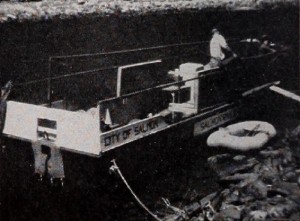
"Spanning the upper and narrower part of the State of Idaho from east to west, the Salmon River provides the original blueprint for one-way traffic. You either end up in western Idaho — or at the bottom of the river. Frank E. Gunnell ended up in Idaho. His coverage of this adventurous journey in The Salmon — River Of No Return is complete, carefully planned and splendidly competent. One becomes thoroughly familiar with the great, flat-bottomed barge, guided by giant sweeps fore and aft, in which the hazardous rapids of the Salmon are surmounted. One is charmed, even fascinated, by the deserted mining huts along the river and the few forlorn characters who still live amid this rocky wilderness. The Salmon — River Of No Return is a leisurely and well made record of a unique vacation adventure." Movie Makers, Dec. 1948, 492.
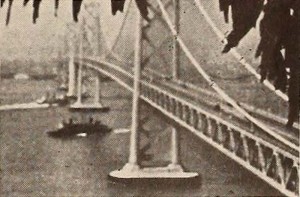
"To present, on 8mm. Kodachrome, where the problem of definition in distant shots is made more difficult by the greater screen enlargement in projection, a serious and satisfying architectural study of a structure that extends not a few hundred feet into the air, but thousands of feet horizontally, is a task that calls for skill in movie making. Raymond O'Connell, in San Francisco — Oakland Bay Bridge, has exhibited that skill and has to his credit, in this film, a definite accomplishment. The study is rendered comprehensible to the audience, at the very outset, by the use of a model of the bridge, which is introduced in the course of the picture, with excellent effect. In several instances, one passes from a shot of the model to another of the actual structure from the same angle, and so easily that it is possible to forget the cinematic labor put forth in finding a vantage point for the camera to show exactly what was needed. Of especial merit are shots of the changing pattern of the cables, made from a moving motor car, which provide a fine essay in abstract design." Movie Makers, Dec. 1938, 620.
"Footage of the Behrens family on holiday in Sandsend; June 1925. Includes various scenes of the family on the beach - Two men are seen wading through the sea, carrying a man and a boy to dry land. A large rowing boat is seen anchored in the background. - Three little girls stand on top of a sand castle, trying desperately to keep their feet dry, while a young boy shovels sand around them in an attempt to keep the in coming tide at bay. - A group of women are seen standing on a breezy hillside, dressed in outdoor clothing, carrying rucksacks and walking sticks. The film also features a brief shot of a London North Eastern Railway (L.N.E.R.) steam train departing from a platform" (NWFA Online Database).
"A travelogue extolling the virtues of New England as a vacation spot. The film shows people swimming at York Beach; visiting a lighthouse; going deep-sea fishing on the "Pearl" with Captain Brewer and visiting Bald Head Cliff for clams, and Cape Neddick for a close-up look at marine life. The tourists appearing in the film may be the Crawley family. York Beach is located in Maine" Library and Archives Canada.
"Seeing Switzerland by R. D. Charlton from Alexandra Headland, Queensland, Australia. Roy has been a winner in past PSA competitions and Switzerland's beauty combined with his film making talents emerged in another winning entry this year. This 9-minute 8mm film was awarded a Ten Best Medal and the Foreign Film Award" PSA Journal, Nov. 1970, 38.
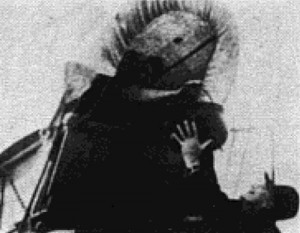
The film received the "Sound Award for the most effective use of sound, and the new MPD Documentary Film Award which is being given for the first time this year. The film might be described as a re-created or dramatized documentary and depicts the early life of the settlers who tilled the soil and made a living over a century ago. In the film we meet Will and Maggie McLeod who have just purchased a farm and are returning in their covered wagon from an auction sale where they have purchased several belongings for their new home. Will McLeod was a ship builder in Nova Scotia, but when that industry died down he decided to migrate westward. This film is their story and shows the struggles they encountered and depicts their way of life in those early days. Excellent photography and excellent editing, coupled with good pacing - all of which are typical Ruddell trademarks - blend well together to this top award film" PSA Journal, Sept. 1965, 50.
The film is also known as The Settlers: Early Pioneer Farmers of the Great Lakes Region.
Total Pages: 37